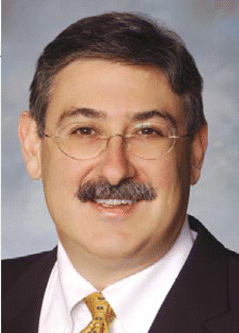Supracricoid Partial Laryngectomy Should Be One Treatment of Choice for Intermediate to Advanced Laryngeal Cancer
Explore This Issue
June 2006Supracricoid partial laryngectomy (SCPL) should be considered as an important option for the treatment of selected intermediate to advanced laryngeal cancers because it can preserve functionality of the larynx, according to expert surgeons interviewed for this article. SCPL, developed as an alternative to total laryngectomy for selected glottic and supraglottic carcinomas, typically preserves a patient’s ability to speak and swallow while at the same time assuring a high rate of local control of cancer.
Slow to Catch On
Despite the advantages of SCPL, a confluence of factors has kept this procedure from enjoying more widespread use in the United States.
“SCPL avoids total removal of the voice box and is a particular advance for the surgical management of selected intermediate and advanced as well as some recurrent cancers of the larynx,” stated Gregory S. Weinstein, MD, Professor and Vice Chair of the Department of Otorhinolaryngology–Head and Neck Surgery at the University of Pennsylvania in Philadelphia.
“SCPL avoids total removal of the voice box and is a particular advance for the surgical management of selected intermediate and advanced as well as some recurrent cancers of the larynx.” – Gregory S. Weinstein, MD
Dr. Weinstein helped introduce the technique in the United States and has written widely about his experience with SCPL. He explained that SCPL “passes the test” of saving the voice box and preserving the patient’s ability to speak and eat without a permanent tracheostomy or gastrostomy tube two years after the procedure—the point when no local recurrence is expected. Dr. Weinstein stated that he has colleagues that can perform SCPL who are within driving distance of any patient in the United States.
“SCPL is a remarkable, unprecedented advance as a surgical option for intermediate to advanced laryngeal cancers. Despite the opportunity for using this technique, it is not as widely implemented as it should be,” explained Chris Holsinger, MD, Assistant Professor at M.D. Anderson Cancer Center in Houston, Tex., a surgeon experienced with the technique and author of several articles about SCPL.
Development of SCPL
In 1959, two surgeons working in Vienna proposed the idea of removing most of the larynx and attaching the hyoid bone (tongue base) to the cricoid cartilage, Dr. Holsinger explained. The technique was published in French and was greeted with enthusiasm in Paris. Over the next 20 years, three French surgeons—Laccoureye, Labayle, and Piquet—improved on the technique. These surgeons published papers in the early 1970s that advanced the technique and refined patient selection, Dr. Holsinger continued.

Leave a Reply